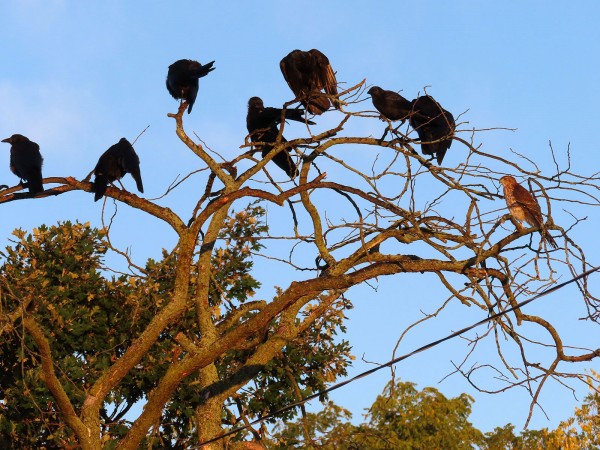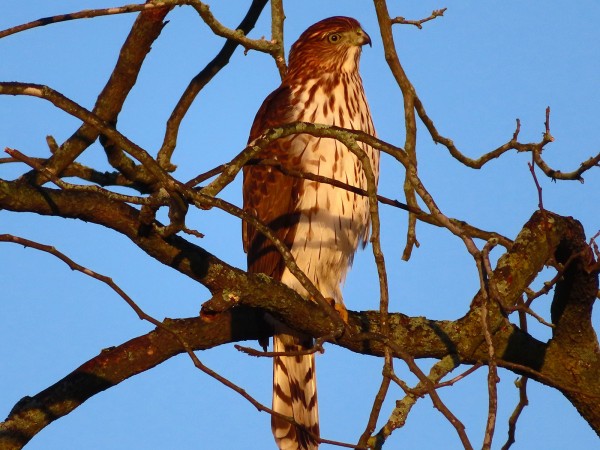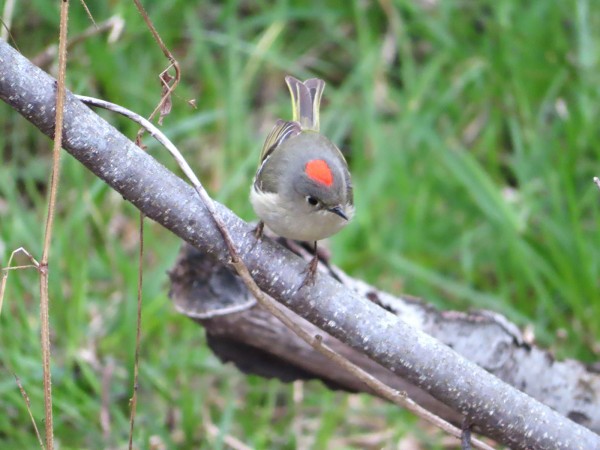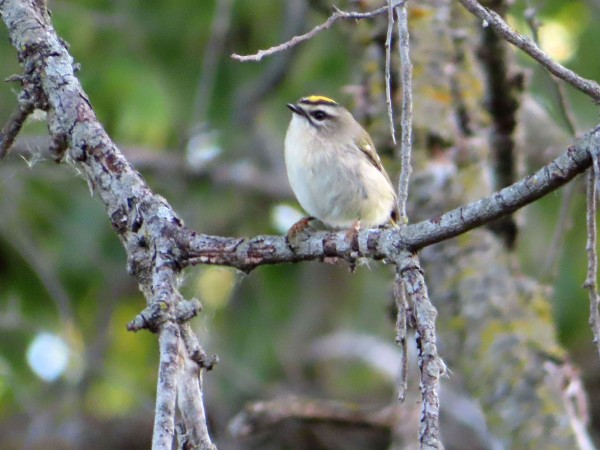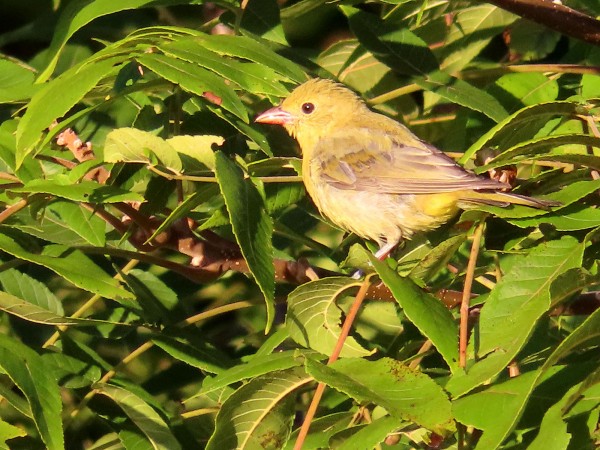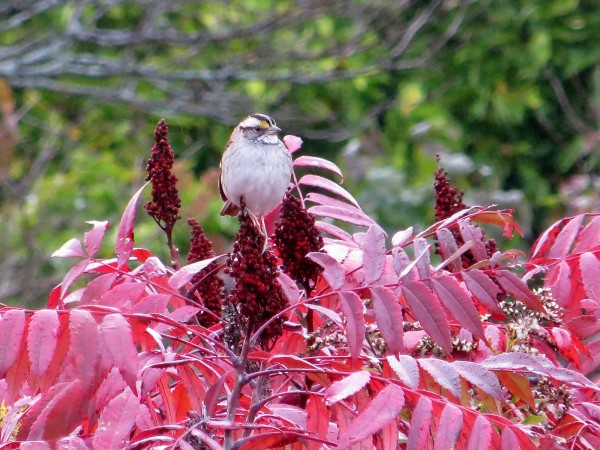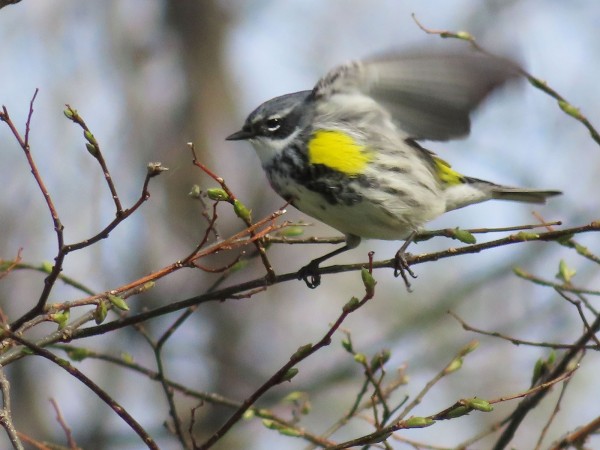Chuck's Birding Report #80
21 September - 27 September 2021
Dear fellow flock of birders,
The wildflowers in the Arboretum continue to go to seed so the American Goldfinches are feasting on all kinds of seeds and some of them are still feeding wing-fluttering young. More of the leaves on the trees are turning various colors of yellow, orange and red. The Sumac Trees are turning an especially striking dark red. The Jewelweed with yellow or orange flowers are going to seed and the little seed pods are great fun to squeeze gently and watch the seeds spring out. The American Jumpseeds in the woods are also producing seeds now. If you grab the single stem below the flowers with your thumb and forefinger and slide upward to knock off the seeds, they also spring or “jump” some distance from the plant. Ah yes, the wonders of nature.
Last Saturday I came to the Arb at sunrise and I always wonder which birds will be the first to wake up and become active. Recently it has been the American Crows. About six to eight tend to gather in the small, bare tree between the two parts of the Visitor Center parking lot. They come in cawing and then settle into warming themselves in the first rays of the sun and then spend the next 15 minutes or longer preening their feathers. On that day however a Cooper’s Hawk flew in and perched in the tree with them. I thought that might stir things up a bit but I was totally wrong. The crows didn’t pay any attention to the hawk and continued to preen. The hawk just kept looking around for something to do or eat. In the past I’ve seen the Cooper’s and the Crows chase each other as if playing tag. First the hawk chases a crow and then the crow chases the hawk. I really think they do it for fun. I’ve included two photos. One is with the American Crows perched and preening with the Cooper’s hawk perched at far right. The other photo shows the Cooper’s Hawk by itself in the warm glow of the sun at sunrise.
The two new birds I’ve had these past few days have been kinglets, both the Ruby-crowned Kinglet and the Golden-crowned Kinglet. In three recent days in the Arb I’ve seen 4, 5 and 6 Ruby-crowned Kinglets respectively at the west end of the Visitor Center parking lot. They are small birds like warblers. They flick their wings a lot. They are mostly olive green and have oval-shaped, white eyerings. They are hard to photograph because they are in constant motion. It reminds me of the White Rabbit in Alice in Wonderland who would sing “I’m late, I’m late for a very important date. No time to say hello, goodbye. I’m late, I’m late, I’m late. A photo of the Ruby-crowned Kinglet is included and it does show the ruby colored crown which can also be hidden or even raised when two males go at it.
I haven’t seen the Golden-crowned Kinglets in the Arb but others have. On Sunday I visited Lake Farm Park in Dane County and that’s where I saw seven Golden-Crowns in one group. They were very near the observation tower next to the first parking lot. At first they were in a tree and then they came down to feed in the wildflowers very near me. They have a yellow to orange crown bordered by black bars. They too move quickly. They are silent right now but in the spring both kinglets have great songs. A photo is included.
Again many of the birds are eating the white berries of the Gray Dogwood. I saw a female Scarlet Tanager eating the berries but then it moved to a bush without berries and gave me good, long views for photos. Thank you Miss Tanager. The color of the female in not red like the male but yellowish instead. It also has a thick seed-eating type of beak. A photo is included.
I’ve been seeing flocks of Eastern Bluebirds fly over this past week. When they fly over they give their two-note call. I often mimic the call and sometimes they then land and perch is trees near me. The flocks can be all juveniles or all adults based on my observations. Today I saw one adult that came down and was feeding on the dark purple to black berries of the Pokeweed. What makes Pokeweed so attractive is the bright pink stems, pedicels and peduncles that support the berries. Included is a photo of an adult male Eastern Bluebird who has just plucked a berry from the Pokeweed and has it in its beak.
Another group of birds that are beginning to arrive are new species of sparrows that have not been in the Arb this summer. So far I’ve seen a couple Lincoln’s Sparrows and small flocks of up to 15 White-throated Sparrows. The white of the throat is very obvious and is set off by a thin border of black. Included is a photo of a White-throated Sparrow perched on a Sumac Tree in its fall colors.
Birders are still seeing numerous migrating warblers. This past week has brought in quite a few Yellow-rumped Warblers. I’ve seen them at the west end of the Visitor Center parking lot but also down at Big Spring. The ones a Big Spring find insects in the bushes on either side of the outflow. They also fly out over the outflow, grab an insect and return to their perch very much like flycatchers do. Sometimes they perform intricate aerial displays to catch an insect. It can be quite a show. The arrival of Yellow-rumped Warblers is usually an indication of the near end of warbler migration. Yellow-rumps are the first to arrive in the spring and the last to leave in the fall.
My last two photos are of Yellow-rumped Warblers. The one with its wing up was seen last spring and is in breeding plumage with bold blacks and whites with a bright yellow side and rump patch. Not seen is a bright yellow crown too. The other photo is one I took a day or two ago of the Yellow-rumped Warbler in its drab plumage of fall. It still has a bright yellow rump which is covered by its wings but the rest of the colors are quite muted.
That’s the bird report for this past week.
Good health to all of you and good birding too,
Chuck

